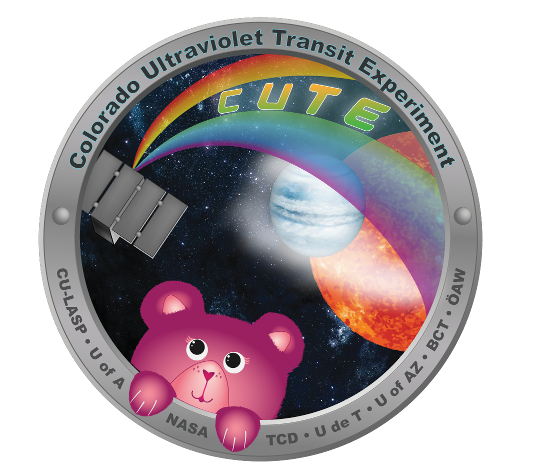
Image courtesy of The CUTE home page
 Copyright © Michael Richmond.
This work is licensed under a Creative Commons License.
Copyright © Michael Richmond.
This work is licensed under a Creative Commons License.
Contents

Image courtesy of
The CUTE home page
CUTE stands for "Colorado Ultraviolet Transit Experiment", which is a project funded by NASA to construct a very small astronomical satellite. You can find the main website for the project at
The main instruments --- a telescope and spectrograph --- a housed in a small package that is roughly the size of a small suitcase.

Image courtesy of
The CUTE home page
The instrument is connected to a solar panel and circles the Earth in a low orbit, just a few hundred kilometers above the surface.
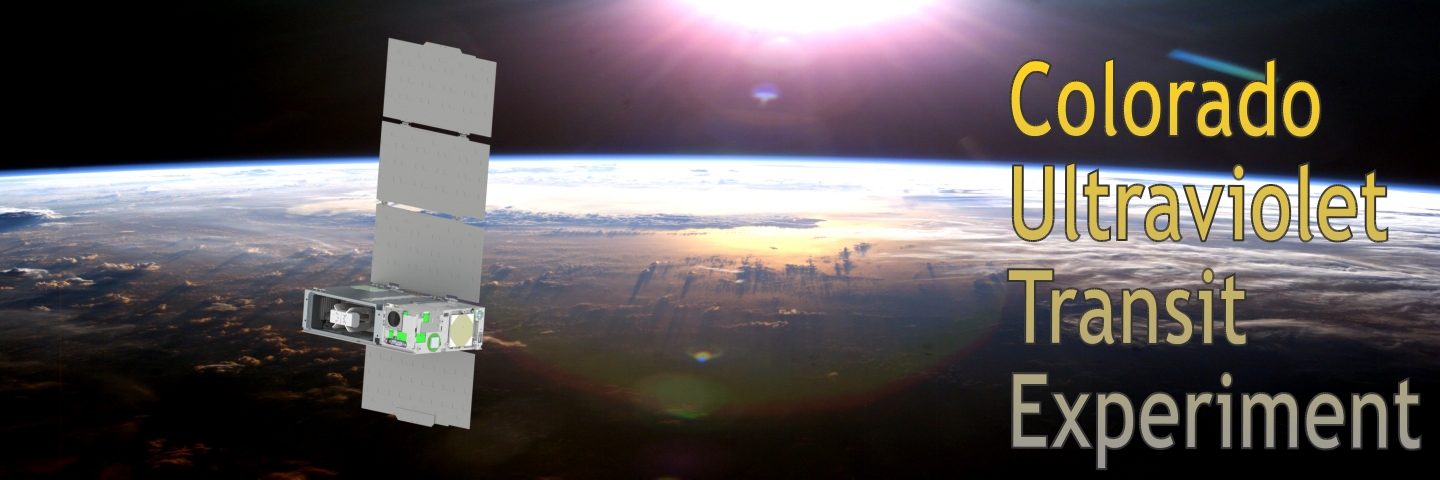
Image courtesy of
The CUTE home page
The goal of CUTE is to measure features in the near-ultraviolet spectrum of stars; in particular, it will look at certain stars which host exoplanets, making measurements as the planet pass in front of their hosts.

Image courtesy of
The CUTE home page
If you go outside tonight around 11 PM, you'll see the constellation Cygnus high in the southern sky. Near the shoulder of Cygnus, where the wings meet the body, lies the star HD 195689, which is an A-type star with a temperature of about 10,000 Kelvin.
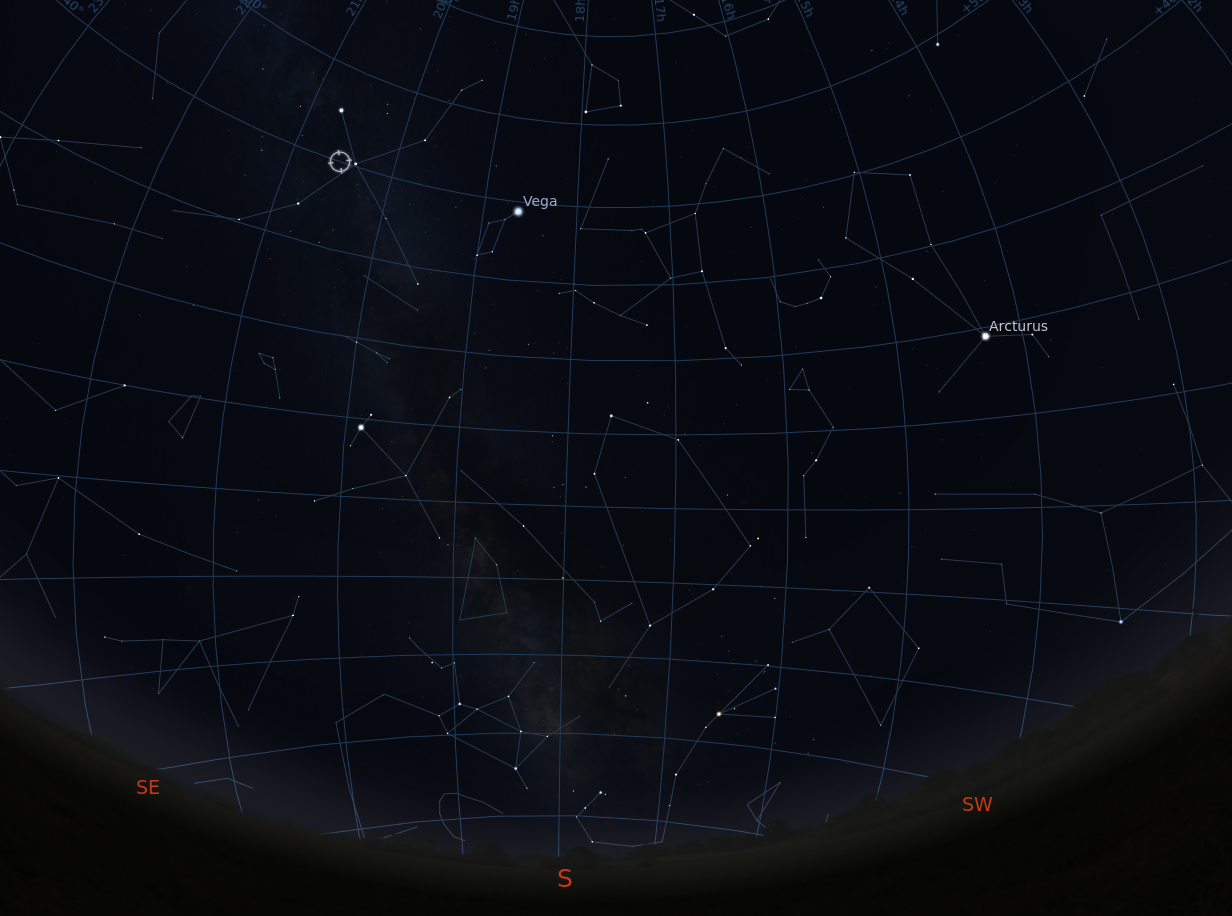
Although it is larger and much more luminous than our Sun,
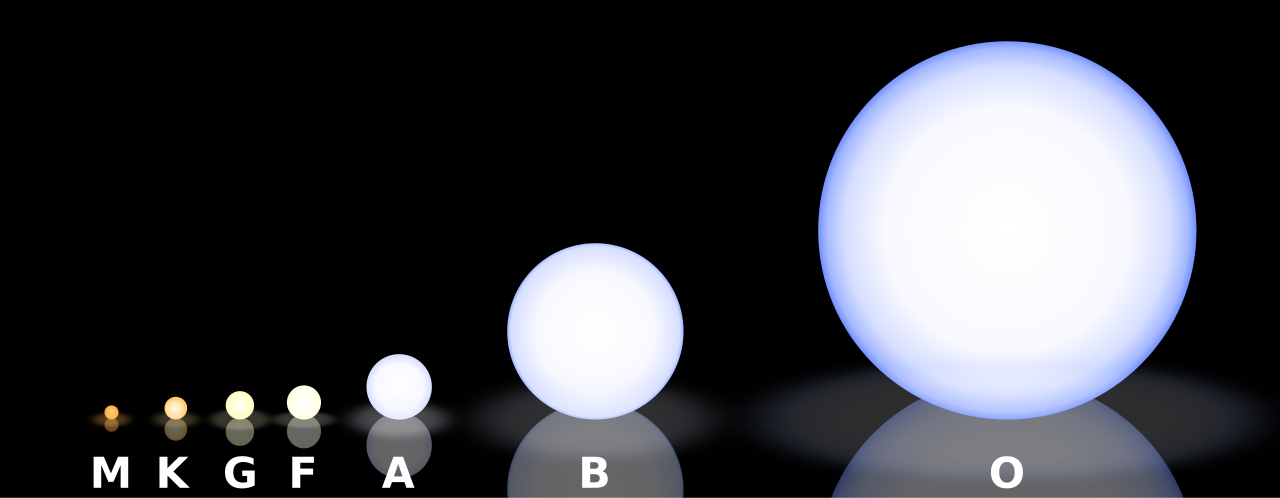
Image courtesy of
Rursus and Wikimedia
it lies so far away from us (about 200 parsecs or 660 light years) that it appears a bit too faint for the unaided human eye to see it.
In 2017, astronomers using an "Extremely Little Telescope"
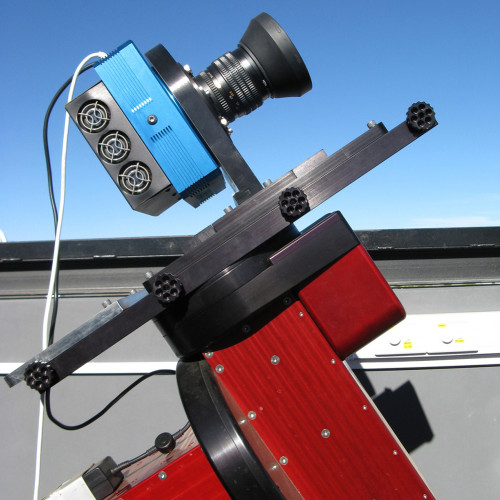
Image of KELT-South courtesy of
KELT Survey home page
noticed that the light of this star periodically dimmed by a small amount every 1.48 days.
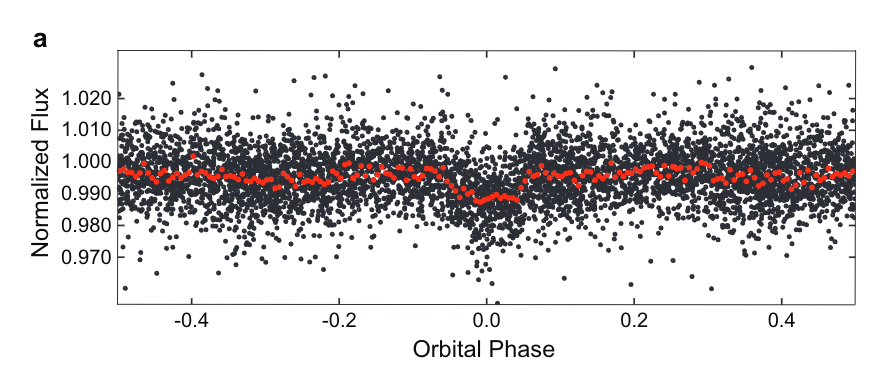
Image taken from Figure 1 of
Gaudi, B. S., et al., Nature 546, 514 (22 June 2017)
We interpret these small, periodic dips in brightness to the TRANSIT of a planet circling the host star.
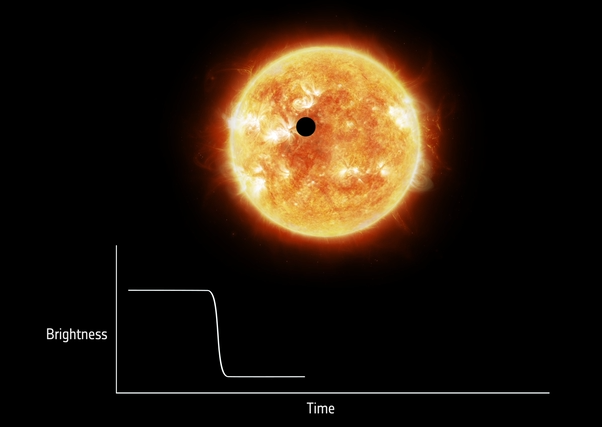
Image and movie courtesy of
ESA - European Space Agency
Based on the period of the dips, and the mass of the host star, we can estimate the size of this exoplanet's orbit. Based on the depth of the dips, and the size of host star, we can estimate the size of the exoplanet. Our current best values for these properties are
Q: Can you guess the nickname given to planets like this one?
That's right -- hot Jupiters.
Measurements of the KELT-9b system by the CUTE spacecraft are described in
Please answer a few basic questions about this paper.
Q: When did CUTE observe this system?
Q: How many transits did it measure?
Q: Were the authors able to identify any specific
elements or molecules in the atmosphere of KELT-9b?
Let's look at some portions of the paper in detail. For example, Figure 1 shows an example of the data collected by CUTE.
Q: Can you explain the connection between the top and bottom
panels of this figure?
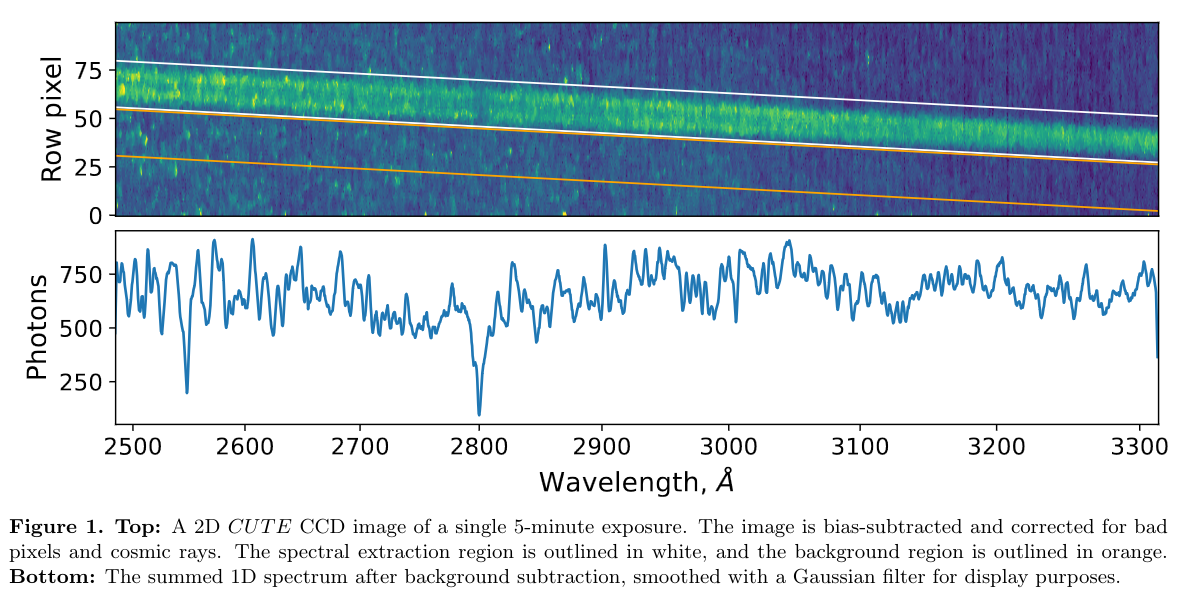
Figure 1 of
Egan, A., et al., arXiv 2407.13656 (2024)
One of the main goals of this project was to measure the SIZE of the planet-plus-its-atmosphere, based on the amount of the star's light which it blocked. The authors created light curves of the transits, based on their measurements.
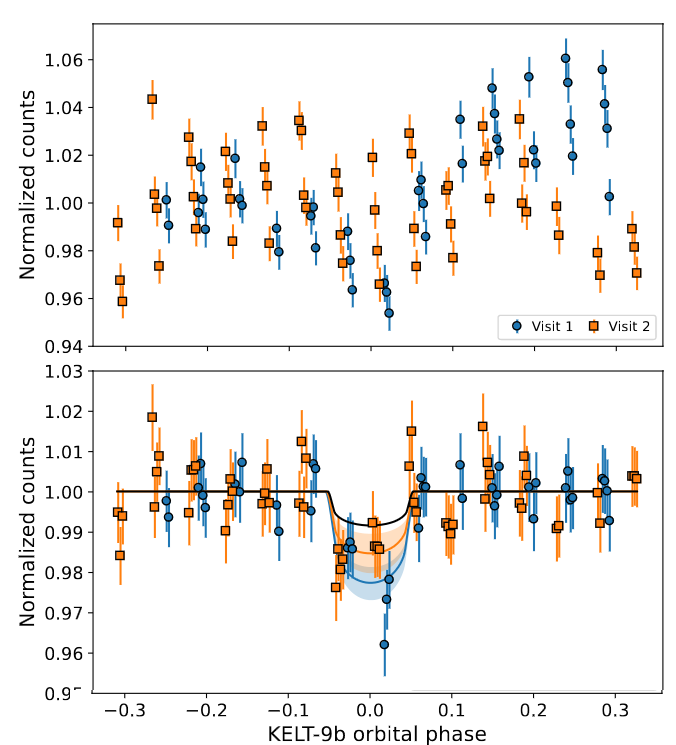
Q: What is the difference between the light curves shown in the
upper and lower panels of Figure 2?
Q: How much of the star's light is blocked by the planet?
Q: Estimate the size of the planet, relative to that of the star.
Does the planet have a radius equal to 0.1 of the star?
Does the planet have a radius equal to 0.01 of the star?
What value?
Now, if one looks at the spectrum of light during a transit, and compares it to the spectrum of light outside of a transit, one can determine the amount of light absorbed by the planet's atmosphere at each wavelength. This yields a transmission spectrum.
Below are shown three transmission spectra of other exoplanets, measured by other groups with different telescopes. Each of the three spectra cover roughly the same wavelength range as CUTE. The upper panel shows the data with small bins (very noisy), while the lower panel uses larger bins (less noisy).
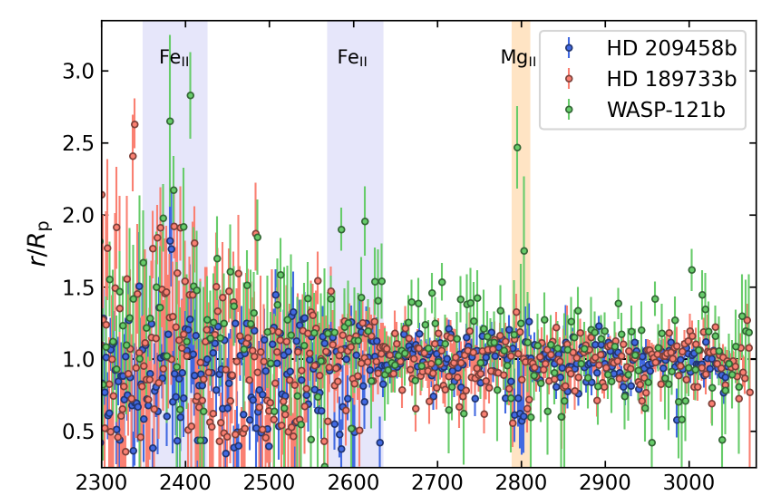
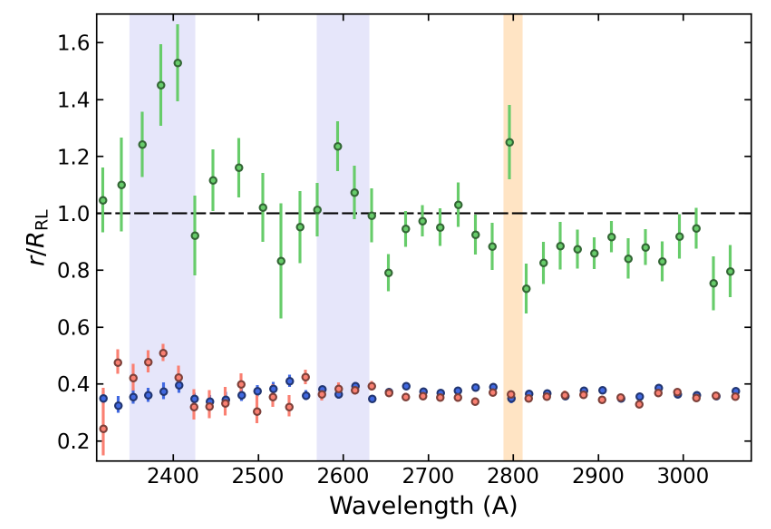
Images taken from Figure 8 of
Cubillos, P. E., et al., A&A 671, 170 (2023)
Q: Which of these exoplanets show(s) obvious features?
Okay, let's now look at the transmission spectra of KELT-9b during the two transits observed by CUTE.
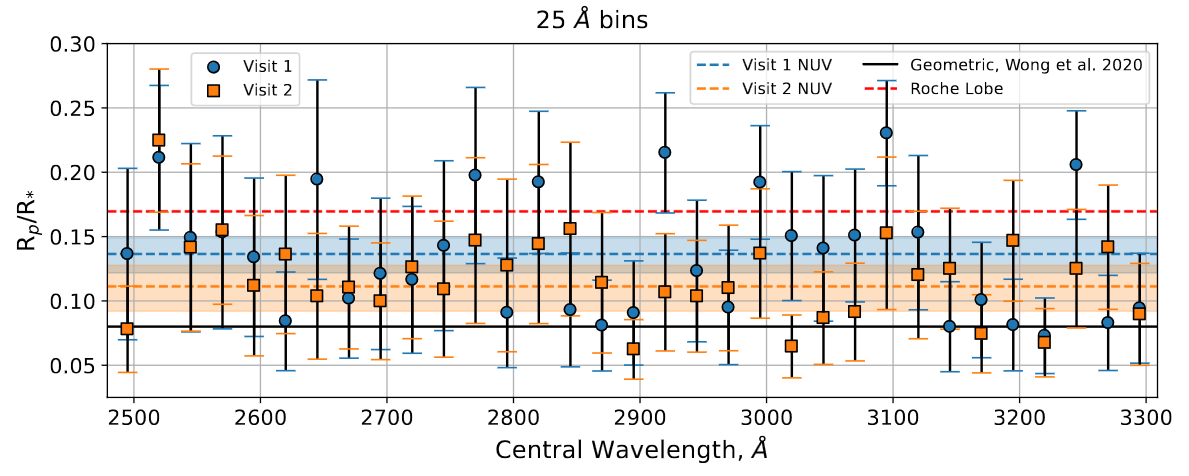
Image taken from Figure 4 of
Egan, A., et al., arXiv 2407.13656 (2024)
Q: Do you see any significant absorption or emission
features?
Q: Explain your answers.
Based on the data collected by the CUTE team, what can we conclude about the exoplanet KELT-9b and its atmosphere?
 Copyright © Michael Richmond.
This work is licensed under a Creative Commons License.
Copyright © Michael Richmond.
This work is licensed under a Creative Commons License.